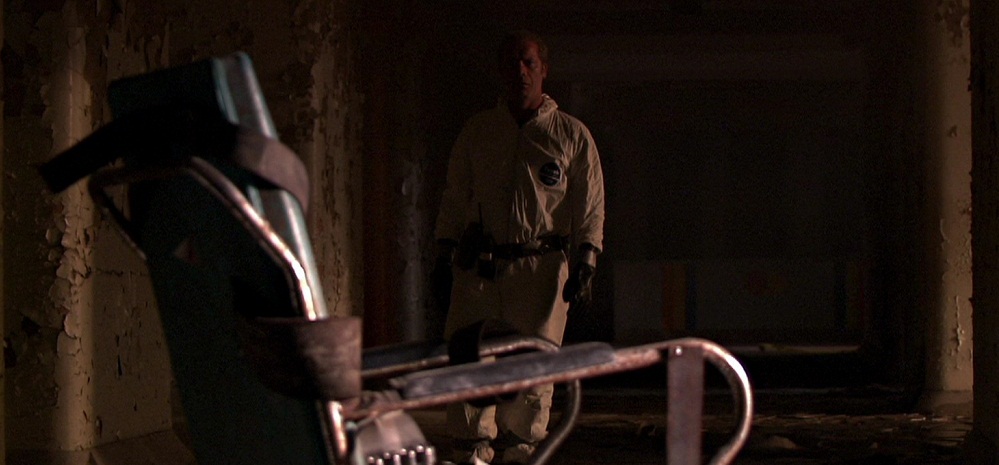‘Session 9’ is the kind of horror film that combines both the supernatural and psychological sub-genres. Working effectively as both, the movie walks you through the harrowing tale of a group of asbestos cleaners who are hired to clean an abandoned asylum. But soon, the trauma and the demons that the walls of the facility hold inside them find their way inside the minds of the mentally susceptible. Although ‘Session 9’ does not come with the “based on a true story” tag, it does draw its inspiration from real life.
Is Session 9 Based on a True Story?
No, ‘Session 9’ is not based on a true story, but it draws its inspiration from several real-life incidents, people, and even locations. To begin with, let’s start with the movie’s main character, Gordon. The inspiration behind Gordon’s character comes from an actual Financial analyst named Richard Rosenthal, who killed his wife after she complained that he had burned their ziti dinner. In a similar fashion, even Gordon kills his wife when she accidentally drops a hot vessel full of pasta on his leg.
Even the movie was filmed in a real abandoned asylum in Danvers, Massachusetts. If you’ve watched the movie, you’ll be able to recall a scene where the guard of the facility recounts the dark history of the hospital. He tells them that the hospital was closed down because the doctors there resorted to inhumane methods of treating the patients just to keep the population of the hospital under control. Even in real life, back in the 1920s and 1930s, the premise of The Danvers State Hospital was overcrowded with patients, and many of them were even accommodated in the facility’s subterranean tunnels. Moreover, as seen in the movie, the real hospital also used several questionable methods, such as shock therapies, lobotomies, drugs, and straitjackets, for treating its patients. Moreover, even the real hospital had asbestos deposits during the movie’s filming, which proved to be quite a challenge for its filmmakers.
Some minor details of the movie, such as the clippings and drawings on several inmate walls, were either actual snippets of what was already on the walls of the facility or were mere reflections of what the filmmakers had found on the walls. Apparently, most of these clippings were a part of some sort of art therapy practiced by the patients when the hospital was still functional. Apart from all the above-mentioned inspirations behind the movie, one might even notice how the film’s premise alludes to real-life mental illnesses and toxic masculinity despite its supernatural themes. The film blurs the lines between insanity and the supernatural to give you a more realistic account of what is going on with its characters.
Read More: Is The Ring Based on a True Story?

